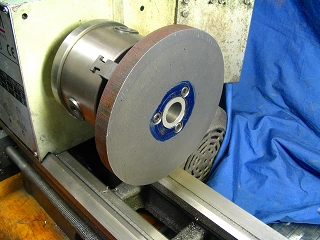 |
1. Making the pulley for the new, 750 watt motor. The pulley blank is cast iron - 140 mm diameter, 15 mm thick. A boss was made beforehand from cast iron and is attached to the back of the pulley blank. The boss has been bored to accept the motor shaft. |
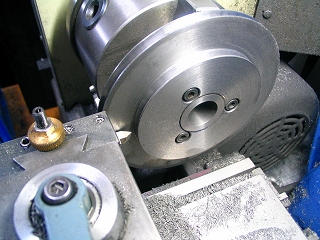 |
2. Cutting the second pulley groove. The finished pulley is 15 mm thick with grooves to accommodate a 4.2 mm wide belt. |
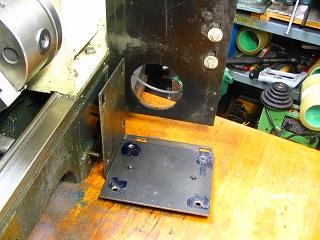 |
3. The L-shaped motor-mounting plate is shown in the foreground. |
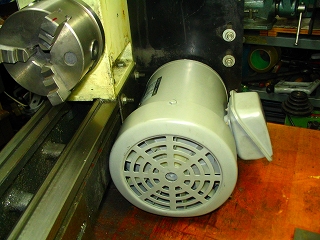 |
4. New motor -- 750 watt, three phase -- mounted on plate. |
 |
5. Close-up of new motor pulley and drive belt. The pulley
has been painted black to retard rusting and is held in place on the motor
shaft with a set-screw. Normally, only electronic control is used to vary the speed of the lathe. But the two-step pulley was included for the sometimes needed high-torque situations. |
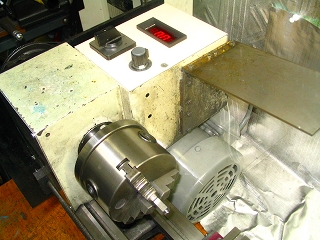 |
6. Control panel includes a readout of the frequency of the motor
controller, proportional to the lathe spindle RPM. |
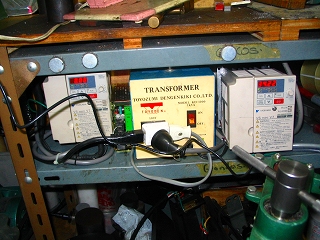 |
7. The center unit is a step-up transformer used to supply the lathe motor controller (VS mini), right side. The milling machine's motor controller is located on the left side. |